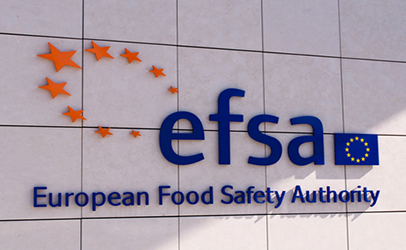Bacteria from humans and animals continue to show resistance to antimicrobials, which is one of the world’s biggest threats to public health and often involves the food chain according to a new report from two European public health agencies.
The report from the European Food Safety Authority (EFSA) and the European Centre for Disease Prevention and Control (ECDC) highlights the impact of the reduced effectiveness of treatment options for people and animals raised for food.
According to the World Health Organization, antimicrobial resistance (AMR) is the ability of microorganisms such as bacteria, viruses and parasites to block the effectiveness of antimicrobial medicines, which include antibiotics, antivirals and antimalarials. As a result, standard treatments become ineffective, infections persist and can easily spread.
The new report from EFSA and ECDC focuses on zoonotic resistance, which involves infections and diseases that can be transmitted from animals to people or, more specifically, a disease that normally exists in animals but that can infect humans. There are many zoonotic diseases, including anthrax, rabies, tularemia and West Nile virus. Much of human exposure to infectious disease has been zoonotic. Bubonic plague is a zoonotic disease, as are Salmonellosis, Rocky Mountain spotted fever, and Lyme disease.
In the wake of the report’s release, European Commissioner for Health and Food Safety Vytenis Andriukaitis reaffirmed his commitment to tackle antimicrobial resistance.
“Levels of antimicrobial resistance still differ significantly from one EU country to another,” Andriukaitis said.
“To win the fight, we need to join our efforts and implement stringent policies on the use of antibiotics across sectors. It is vital that we all renew our commitment to fight antimicrobial resistance by focusing on the key areas set out in the EU One Health Action Plan against antimicrobial resistance.”
 Among the new findings, based on data from 2016, is the detection of resistance to carbapenems in poultry. The class of antibiotics is not authorized for use in animals.
Among the new findings, based on data from 2016, is the detection of resistance to carbapenems in poultry. The class of antibiotics is not authorized for use in animals.
“The detection of resistance to carbapenems in poultry and to linezolid in methicillin-resistant Staphylococcus aureus in pigs is alarming because these antibiotics are used in humans to treat serious infections,” said Marta Hugas, EFSA’s chief scientist. “It is important that risk managers follow up on these findings.”
Mike Catchpole, ECDC’s chief scientist also expressed concern and said progress is not being made in the fight against the super bugs.
“We are concerned to see that Salmonella and Campylobacter bacteria in humans show high levels of antimicrobial resistance,” Catchpole said.
“The fact that we keep detecting multidrug-resistant bacteria means that the situation is not improving. We need to investigate the origins and prevent the spread of highly resistant strains, such as ESBL-producing Salmonella Kentucky”.
In humans
One out of four infections in humans are caused by Salmonella bacteria that show resistance to three or more antimicrobial medications commonly used in human and animal medicine. The proportion is significantly higher in Salmonella Kentucky and Salmonella Infantis, 76.3 percent and 39.4 percent respectively.
For the first time, ESBL-producing Salmonella Kentucky with high resistance to ciprofloxacin has been detected in four countries, according to the report. These bacteria cannot be treated with critically important antibiotics.
Campylobacter bacteria, which cause the most common foodborne illnesses in the EU, show high resistance to widely used antibiotics, including ciprofloxacin resistance in 54.6 percent of Campylobacter jejuni and in 63.8 percent of Campylobacter coli; and tetracyline resistance in 42.8 percent of Campylobacter jejuni and in 64.8 percent of Campylobacter coli.
In some countries at least one in three Campylobacter coli infections were multidrug-resistant to important antibiotics, leaving very few treatment options for severe infections.
In animals and foods
Resistance to carbapenem antibiotics was detected at very low levels in poultry and in chicken meat in two EU member states. Carbapenems are used to treat serious infections in humans and are not authorized for use in animals.
Two Livestock-Associated Methicillin Resistant Staphylococcus aureus bacteria found in pigs were reported to be linezolid-resistant. Linezolid is one of the last-resort antimicrobials for the treatment of infections caused by highly resistant MRSA.
Combined clinical resistance to critically important antimicrobials was observed at low to very low levels, ranging from 0.2 percent to 1 percent, in Salmonella, Campylobacter and E. coli in poultry. Resistance to colistin was observed at 2 percent in Salmonella and E. Coli in poultry.
Prevalence of ESBL-producing E. coli in poultry varies markedly between the EU member states, from less than 10 percent to more than 70 percent. Bacteria that produce ESBL enzymes show multi-drug resistance to β-lactam antibiotics – a class of broad spectrum antibiotics that includes penicillin derivatives, cephalosporins and carbapenems. This is the first time the presence of extended-spectrum beta-lactamase (ESBL)-producing E. coli was monitored in poultry and poultry meat.
(To sign up for a free subscription to Food Safety News, click here.)
